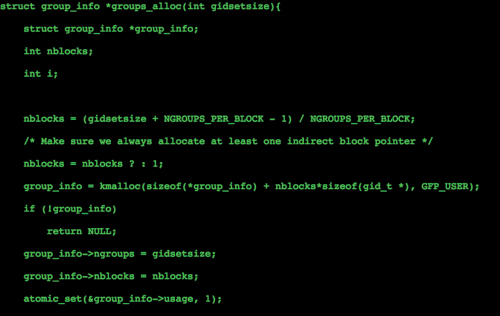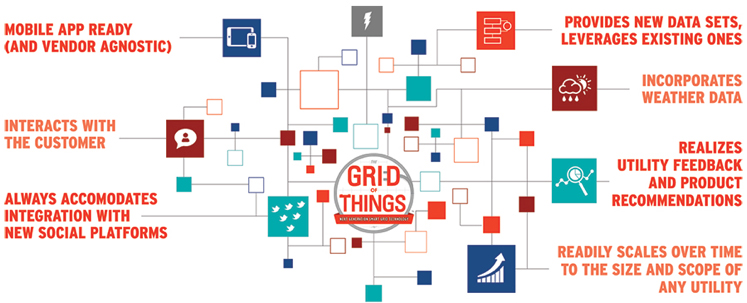When Electric Energy T&D approached us and said they were passing the baton to me, a software developer, for Part 3 of The Internet of Things Starts with the Grid of Things, I abruptly said, “don’t you mean you are passing the toast”?
For those of you that missed Part 1 and Part 2, The Internet of Things Starts with the Grid of Things is a five part tell-all editorial series that began with us giving away a big secret:

“I want my toaster to talk to my Utility.”
–Zac Canders
Part 1 announced the secret. Part 2 complemented it. Part 2 provided a step-by-step manual on how to embrace interoperability. A call to action, to “Become Interoperable”. It provided the details on how to collaborate, embrace standards, and create APIs. Part 2 laid forth the argument that to drive the next generation of the utility industry, collaboration and involvement must occur.
The Landscape Is Changing and So Is Software Development
We all agree that the utility industry is changing fast. Fossil fuels are being replaced with green alternatives. Microgrids, renewables, and batteries are now a common theme at every utility around the World. Whether we call it a revitalization (or maybe even a revolution) the current dynamics and state of the utility industry make it an exciting time to be involved. The modularity of today’s software and platforms has yielded newfound opportunities for creative and exciting capabilities that previous generations only dreamt of. Each employee is not only part of a company’s strategic revenue plan, but can also be part of a much broader vision, the Grid of Things. But how?
More importantly, Who...
First, I need to take a step back. The evolution that the Grid of Things series addresses is how the ‘toaster’ is a simile for something much more meaningful:
“The idea of your toaster talking to your utility doesn’t make sense. Who would want to skip breakfast just because electricity is a few pennies more that day”? - Peter DiSalvo, CTO and Co-founder of DataCapable
The ‘toaster’ in this series is interchangeable with any device in your home. If the call to action, “Become Interoperable”, is based on standards and API’s then Part 3 is the logical definition of the individuals responsible; the software developers, product managers, and technical experts that are moving device-to-utility communications from the realm of ‘possible’ to ‘inevitable’.

Figure 1: Code is what is driving change in the industry
Building the Grid of Things Requires Passion
“Why are you a software developer?” This is the first thing I ask any potential software engineering new hire. And here is why you should too:
Whether it’s their first day in the utility industry or a seasoned developer looking for a new role. As a development manager, it’s important to build a team that is passionate about software. You need people that are truly passionate about creating applications and solving problems with code, regardless of the use case. The type of people that will create a new app for fun instead of watching a movie on a rainy day.
The Grid of Things isn’t a millennial vision...
Generational challenges do exist and the software teams building the Grid of Things must work well together. Working as part of a team means that self-motivation, excitement to solve problems, and learning new skills are keys to the success of the entire organization.
The younger generation is likely to jump from job to job every couple years early in their career. I fall into this category having held 5 jobs in 10 years as a developer. Software development managers can try to mitigate turnover by constantly challenging your team and allowing them to embrace new and exciting technologies. Have an “Innovation Event” once every quarter that allows the team to drop their tasks for the day and build something for fun that can help the business grow.
In contrast, the older generation has foundational expertise that can support processes and technology adoption guidance that will ultimately ensure a company runs smoothly. These seasoned team members have lived through decades of development trends and understand the impact of adopting an immature technology. Leverage these team members to ensure that technology adoption, maturity, and general big picture considerations are analyzed before new technology is adopted. The last thing you want to do is select a technology that isn’t the right fit for your solution and won’t be supported in a year.
It’s also important to recognize that while passion for development is important, it’s also essential to encourage and embrace the team’s passion for things outside of work. Doing the same thing day in and day out will get tiring for anybody. Working long hours without something to relieve stress or give the brain a break will ultimately burn any team member out.
The Grid of Things Is the Evolution of Technology
The utility industry has figured out how to gather large amounts of data. This is evident with things like smart meter (AMI) data. Most product and service providers have a clear understanding of how to gather, store, and analyze big data. The next big wave of technology involves using the insights gathered from big-data and automating existing inefficient processes within an organization.
This trend is happening across every industry. In 2017, a software developer does not have to be knowledgeable about all fields. There are third party experts for every niche and these experts provide API’s for easy integration.

Figure 2: API’s can enhance the capability of a software solution and enable predictive intelligence
Gone are the days where a developer has to be the expert
Software companies are turning their areas of expertise into API’s for others to use. Companies can focus on the things that they do well and not worry about the rest. Each company can generate revenue on individual pieces of their functionality. For example, a software developer can use an API that’s available on the web to run some advanced algorithms that require very specific skills. This functionality would be expensive for a company to build on its own. This modularity opens value for both the business and its customers. Software companies have the liberty to focus on their core capabilities and leverage the expertise of others when needed.
The power of the cloud
Moving software to the cloud is inevitable. The utility industry must accept this. It’s an uncomfortable situation for a lot of utilities and vendors because they lack the proper knowledge and expertise to do it the right way. Moving software to the cloud can enable interoperability, accessibility, and if done correctly, enhance security.
The role of standards
Standards are an important aspect of interoperability, collaboration, and adoption. Within in your system, you’re free to follow best practices and your own standards, but communication outside your platform should follow well known and accepted standards. Keep in mind:
- Sometimes standards may use outdated or clunky technology to support older platforms and due to a lack of support.
- It’s important to get involved with standards bodies and make sure that standards are done correctly with the latest accepted technology. It’s hard to motivate a team when they’re stuck working on old, boring technology.
The Grid of Things Depends on Collaboration
Each software developer is playing an active role in the Grid of Things vision. API’s and collaboration is enabling software platforms and companies to do things that never were imagined before. I personally want each and every one of you to get involved. Send me a note at Peter@DataCapable.com.
Collaboration is the most important aspect to advancing technology. Without collaboration, every business would be wasting time rebuilding the same functionality over and over. As we look to the next installment of the Grid of Things, Collaboration will be that key element. How we, the industry, are becoming interoperable. And as hinted in Part 2, it will conclude in an industry first (and extremely exciting) demonstration that’s going to require your help.
About the Author
 Peter DiSalvo is CTO and Co-founder of DataCapable. He is passionate about new and exciting software and pushing the boundary of what is capable with a software platform. His work has been recognized by publications such as Forbes, TechCrunch, Wired, Telegraph, and The New York Times. His experience includes building software for U.S. Navy destroyers, large-scale military unmanned autonomous aircraft, augmented reality language translation apps, and the smart grid. He is a full-stack developer and his experience encompasses technical leadership, graphical user interfaces, API development, android development, and distributed infrastructure development.
Peter DiSalvo is CTO and Co-founder of DataCapable. He is passionate about new and exciting software and pushing the boundary of what is capable with a software platform. His work has been recognized by publications such as Forbes, TechCrunch, Wired, Telegraph, and The New York Times. His experience includes building software for U.S. Navy destroyers, large-scale military unmanned autonomous aircraft, augmented reality language translation apps, and the smart grid. He is a full-stack developer and his experience encompasses technical leadership, graphical user interfaces, API development, android development, and distributed infrastructure development.









